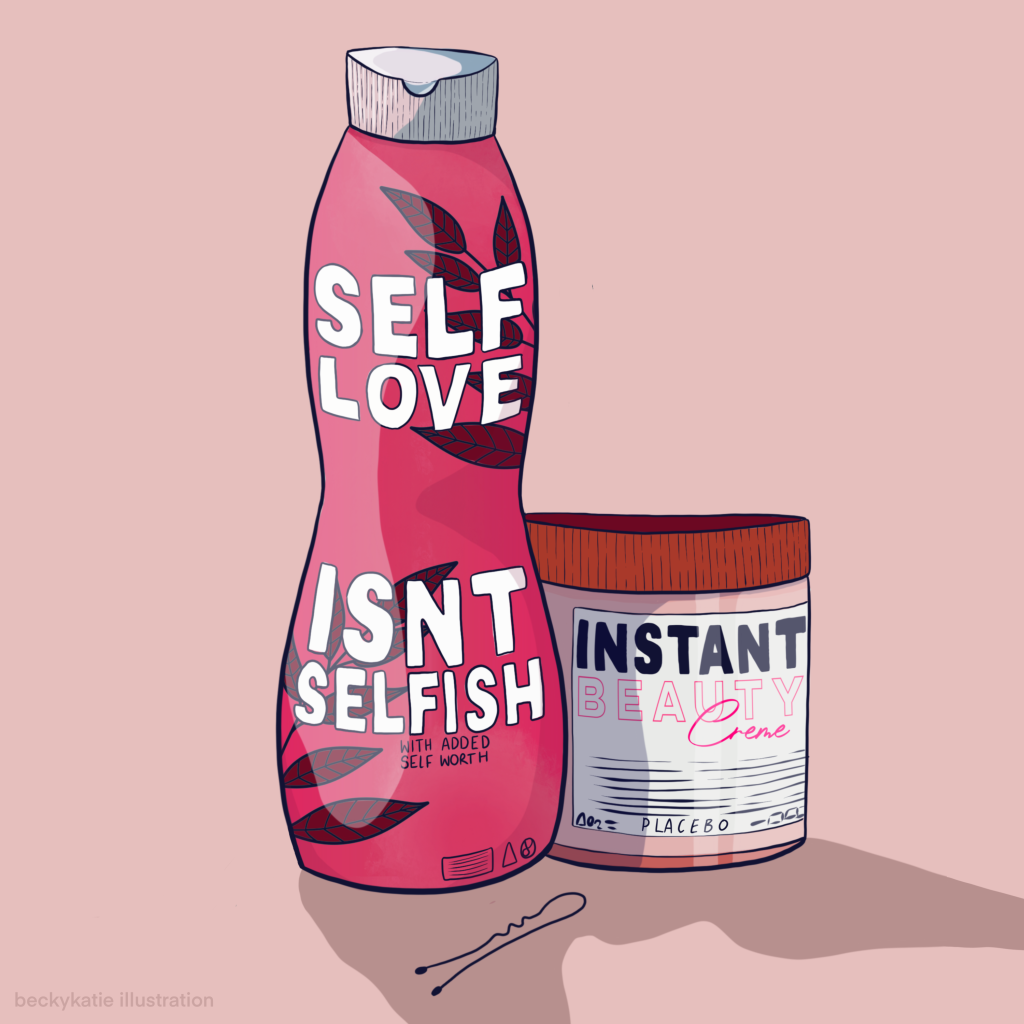
What is self-compassion? What are its benefits to health and wellbeing? How can you teach your learners to be self-compassionate? Read the blog to find out the answers to these questions and more.
An explosion of research has shown that self-compassion is strongly linked to good mental health and wellbeing. Evidence shows how a self-compassionate approach can lead to feelings of happiness, joy, fulfilment and satisfaction as well as reducing stress, anxiety and depression. But what is self-compassion? And how can we teach children such an abstract skill?

A Compassionate Approach
To understand self-compassion, we first need to understand what compassion means. Compassion is defined as the concern for the suffering and misfortunes of others. When we are compassionate, we acknowledge others’ struggles and we try to help them by offering them understanding and kindness.
The difference between compassion and self-compassion can be found in this small word at the beginning: ‘self’. Self-compassion is commonly defined as the ability to treat ourselves with concern and love. It’s the ability to acknowledge our struggles with kindness, without judging and beating ourselves up.

While children are taught in school to be kind and compassionate towards others, it is not as common for them to be taught to have the same approach towards themselves. They offer support and kindness to their loved ones but when times are tough for them, they can be hard on themselves, not knowing how they can approach a difficult situation in a different way. Some will grow up to be adults alienated from their inner self, sometimes experiencing feelings of self-hatred. Of course, it can be challenging to adopt this approach and choose love and kindness over self-criticism. However, we can teach our children the importance of this approach, helping them to prepare themselves for when they face struggles in their lives.
Why Self-Compassion?
When we demonstrate compassion towards others, we help them feel connected and cared for. They know that they can count on us because we are kind and supportive. When we know that we are not alone, we have more chances to overcome our struggles and worries. But what happens when this source of support comes from within? While receiving care from other people is extremely important, especially for babies, children and young people, it is important to remember that we can’t rely on others forever to give us the care we need; it’s crucial to learn to fulfil our needs and take care of ourselves.
Being self-compassionate helps us ask ourselves “How am I feeling?” and “What do I need?” We don’t act from a place of selfishness or self-pity but of concern and love. We acknowledge that we struggle and we accept our feelings. This acknowledgement and acceptance will help us tend to our needs and soothe ourselves – and ultimately become our own best friend. Consequently, when we practise self-compassion and look after ourselves, we are more ready and better placed to care for others too.

The Benefits
Based on numerous resources studying the benefits of self-compassion, scientists have found that self-compassion helps our health and wellbeing by reducing anxiety and depression and increasing joy, contentment and satisfaction. The emotion of compassion is linked to oxytocin, known as the ‘love hormone’. Oxytocin promotes bonding, closeness and trust. When we direct compassion inwards, we release this hormone and the benefits it brings. We feel loved, content and nurtured.
Self-compassionate people have a better quality of life and fewer relationship problems. They follow a positive lifestyle and sleep well. Their heart rate is steady and this leads to a stronger immune system.
Another benefit of self-compassion is increased motivation and resilience. According to research, self-compassion is positively associated with mastery goals – the motivation to learn and grow – and negatively associated with performance goals – the desire to enhance one’s self-image. When you fail and adopt a self-compassionate approach, you give yourself room to try again. Think of this that way: if you are self-critical and punish yourself for your failure, you will feel miserable and without the energy or motivation to try again.
Moreover, self-compassion makes us more resilient in the face of hardship. Instead of pitying ourselves for our struggles and misfortunes, we can approach the facts with self-compassion and the knowledge that we did our best. This approach will help us accept the situation, move on and bounce back. Rather than avoiding the situation, we’re looking at it in the face, building our resilience.
The Science of Self-Compassion
One of the most important benefits of self-compassion is the stimulation of our soothing system. Humans have three emotional regulation systems: the threat system, the drive system and the soothing system.
The threat system exists to protect us from dangers. When the threat system is activated, we feel stressed, scared or anxious, a useful feeling if we are threatened by a lion for example. Our modern society might not have lions walking in the street but it has many things we can feel threatened by: mistakes, lost opportunities, perceived flaws in our abilities, appearance and social skills.
The drive system energises us and keeps us motivated. For example, a project can make us excited, pushing us to achieve our goals. The soothing system has the most calming effect on us. It is activated when we feel safe, nurtured, calm and content.
We need all three systems in equal measure to be able to survive and evolve. If the threat system takes the lead, then we will be seeing threats everywhere, feeling anxious or depressed. If the drive system takes the upper hand, we will constantly be chasing the next goal, trying to achieve even more. The soothing system helps quieten the other two when they become overactive. Self-compassion helps with this because kindness and care towards others and ourselves can activate the soothing system, just like a hug we give a loved one.
Self-Compassion in Schools
Now that we have looked into the science and benefits of self-compassion, how can we as educators help children develop a self-compassionate approach?
Educate Yourself
First of all it’s important to educate yourself on this topic. There are plenty of training and workshops on the Internet, such as this Self-Compassion for Educators or this video on Self-Compassion, both led by Dr Kristin Neff, associate professor in educational psychology at the University of Texas and pioneer in the field of self-compassion. Check the ‘Further Reading’ section at the end of this blog to find out more about self-compassion. Being educated on self-compassion will not only help you support your learners but will also help you practice self-compassion.
Be a Role Model
We all know that children learn by example. Like all things in life, self-compassion can be learnt by mimicking behaviours. Teach them by modelling the behaviour you want them to replicate. For example, when you make a mistake in front of your class, instead of saying ‘Silly me’, acknowledge that you made a mistake and that this is okay – teach your learners that criticising yourself is not the way to achieve. With this kind of behaviour, you teach them to accept the situation and still stay kind to themselves.
Explain Self-Care
Teach them the importance of self-care and how it’s different from selfishness. Self-care is attending to our needs; it’s doing things that we love and that nurture us. Teach them that we can still be kind and loving towards others when we are kind and loving towards ourselves. Use this amazing Being Kind to Yourself Worksheet to encourage your learners to think about ways they can look after themselves.
Demonstrate Acceptance
Teach them that self-compassion doesn’t mean that we ignore our feelings – quite the opposite: when something bad happens that upsets or angers us, we acknowledge these feelings but instead of saying how bad we are or that we will never achieve, we choose to be kind by thinking that it is okay, it is hard but next time it will be better. Bad things will happen – that’s for sure. Our learners, like all of us, will face difficulties at some point in their lives: they will encounter frustrations, losses will occur, they will make mistakes. By teaching them that these things are part of life and that they happen to all of us, you will help them set the roots for a resilient life. Self-compassionate people accept that they are suffering and are kind towards themselves in these moments. Twinkl has created this lovely Feelings Folder to help you support Early Level learners to acknowledge and express their feelings.
Incorporate Self-Compassion Practices in Lessons
Incorporating self-compassion practice in the classroom is a very good way to support your learners to become more self-compassionate. A simple self-compassion practice is looking into the way they would treat a friend. This will help them consider how they treat others as opposed to how they treat themselves in challenging times. Hopefully, through this practice, they will start seeing themselves as an inner friend, an inner ally. The point is to treat themselves in the same, kind way they would treat a friend.
Another practice you can use in your classroom is the supportive touch practice. This one asks your learners to place their hands on the heart and notice the sensations. Touch has a soothing effect when we feel stressed or upset and learning to offer this to ourselves can help lessen the impact of challenging emotions.
The common element in all self-compassion practices is mindfulness. When we take the time to slow down and relax, we show love and kindness to ourselves. Why not use this Mindful Moments PowerPoint and these Mindfulness Breathing Exercises to teach First Level learners how to take a break and relax body and mind?
“Be nice to yourself. It’s hard to be happy when someone’s mean to you all the time.” – Christine Arylo

Further Reading
Self-Compassion, Dr Kristin Neff
Self-Compassion for Students – Greater Good in Education
Making Friends with Yourself: A Mindful Self-Compassion Program for Teens – Center of Mindful Self-Compassion

One reply on “Teaching Self-Compassion in Schools”
Reblogged this on Freethinkers Notes and commented:
Teaching how to feel, teaching opinions
LikeLike